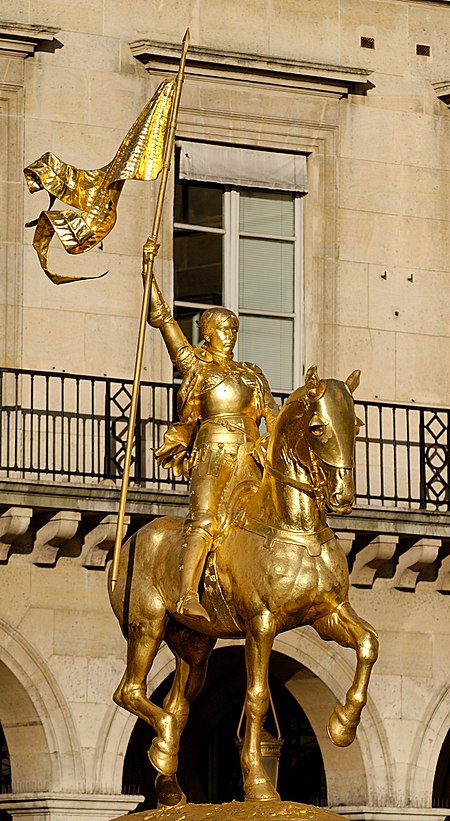Jeanne d'Arc (Frémiet)
1899 sculpturesCultural depictions of Joan of ArcEquestrian statues in AustraliaEquestrian statues in FranceEquestrian statues in Louisiana ... and 9 more
Equestrian statues in PhiladelphiaOutdoor sculptures in PhiladelphiaSculptures of womenSculptures of women in AustraliaSculptures of women in FranceSculptures of women in LouisianaSculptures of women in PennsylvaniaStatues of military officersWorks about Joan of Arc

Jeanne d'Arc is an 1874 French gilded bronze equestrian sculpture of Joan of Arc by Emmanuel Frémiet. The outdoor statue is prominently displayed in the Place des Pyramides in Paris.
Excerpt from the Wikipedia article Jeanne d'Arc (Frémiet) (License: CC BY-SA 3.0, Authors, Images).Jeanne d'Arc (Frémiet)
Rue de Rivoli, Paris 1st Arrondissement (Paris)
Geographical coordinates (GPS) Address Nearby Places Show on map
Geographical coordinates (GPS)
| Latitude | Longitude |
|---|---|
| N 48.863819 ° | E 2.332028 ° |
Address
Rue de Rivoli
Rue de Rivoli
75001 Paris, 1st Arrondissement (Paris)
Ile-de-France, France
Open on Google Maps









